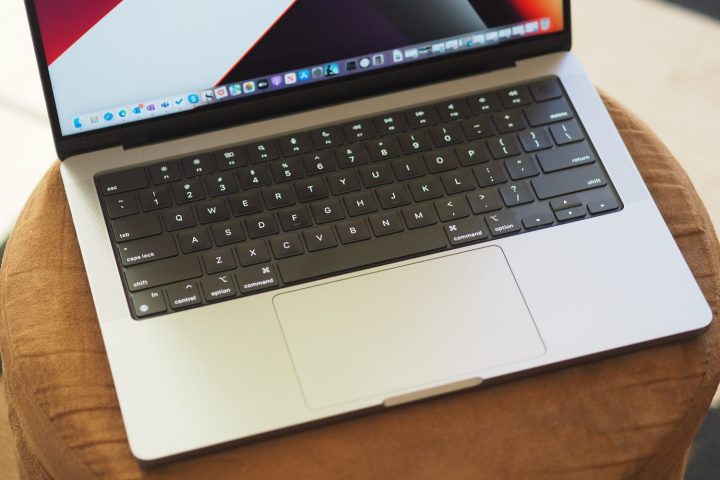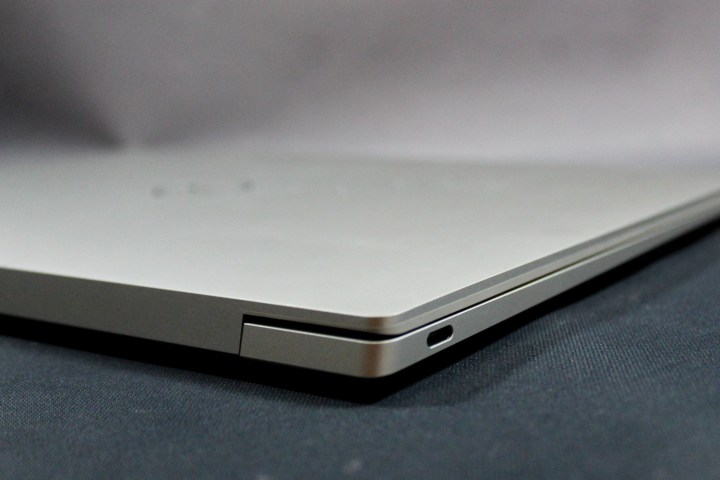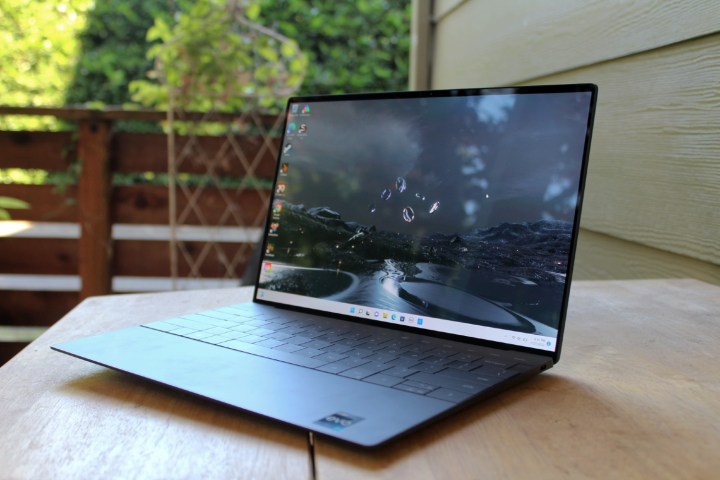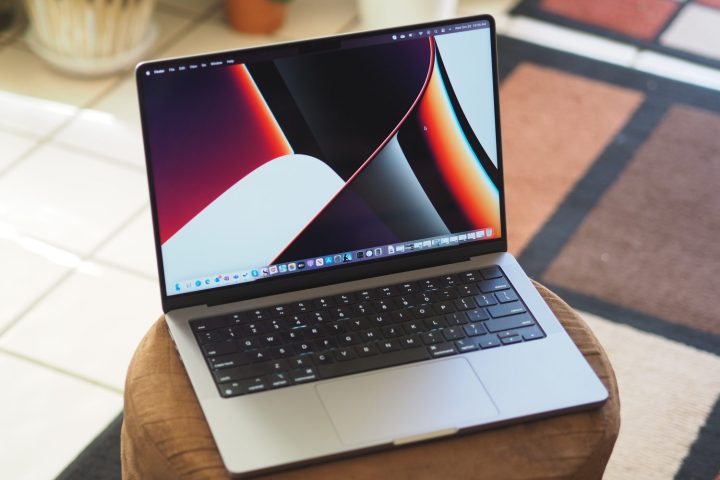If you’re looking for a 13-inch laptop or 14-inch laptop and you want a truly premium offering, then Dell’s XPS 13 Plus and Apple’s MacBook Pro 14 are likely to be on your list. Arguably, the MacBook is in a different class as a powerful creator’s machine versus the XPS 13 Plus that’s aimed at demanding productivity workers.
Even so, the MacBook Pro 14 has elements that make it a stronger competitor to the XPS 13 Plus than the less expensive MacBook Air M1 and MacBook Air M2. Therefore, it’s important to evaluate the two and see if the more expensive MacBook is worth the extra money.
Specs
| Dell XPS 13 Plus | Apple MacBook Pro 14 | |
| Dimensions | 11.63 inches by 7.84 inches by 0.60 inches | 12.31 inches by 8.71 inches by 0.61 inches |
| Weight | 2.71 pounds | 3.5 pounds |
| Processor | Intel Core i5-1240P Intel Core i7-1260P Intel Core i7-1280P |
Apple M1 Pro Apple M1 Max |
| Graphics | Intel Iris Xe graphics | Integrated |
| RAM | 8GB 16GB 32GB |
16GB 32GB 64GB |
| Display | 13.4-inch 16:10 IPS Full HD+ (1920 x 1200) non-touch 13.4-inch 16:10 IPS Full HD+ touch 13.4-inch 16:10 OLED 3.5K (3456 x 2160) touch 13.4-inch 16:10 IPS UHD+ (3840 x 2400) touch |
14.2-inch 16:10 Liquid Retina XDR 3024 x 1964 |
| Storage | 512GB SSD 1TB SSD 2GB SSD |
512GB SSD 1TB SSD 2TB SSD 4TB SSD 8TB SSD |
| Touch | Optional | No |
| Ports | 2 USB-C with Thunderbolt 4 | 3 x USB-C with Thunderbolt 4 1 x HDMI 2.0 1 x 3.5mm audio jack SD card reader |
| Wireless | Wi-Fi 6E and Bluetooth 5.2 | Wi-Fi 6 and Bluetooth 5.0 |
| Webcam | 720p, Windows Hello IR webcam | 1080p |
| Operating system | Windows 11 Home or Pro | MacOS Monterey |
| Battery | 55 watt-hours | 70 watt-hour |
| Price | $1,299+ | $1,999+ |
| Rating | 4 out of 5 stars | 5 out of 5 stars |
Price and configurations
Both are premium laptops, but the MacBook Pro 14 is by far the more expensive at the high end. It starts at $1,999 for an 8-core CPU/14-core GPU M1 Pro processor, 16GB of RAM, and a 512GB SSD. It’s a whopping $5,899 when fully decked out with a 10-core CPU/32-core M1 Max CPU, 64GB of RAM, and an 8TB SSD.
The XPS 13 Plus starts at $1,299 for a Core i5-1240P CPU, 8GB of RAM, a 512GB SSD, and a Full HD+ non-touch IPS display. Its most expensive configuration is $2,399 for a Core i7-1280P, 32GB of RAM, a 2TB SSD, and either a 3.5K OLED or a UHD+ IPS panel.
The MacBook Pro 14 top-end models are aimed directly at the most demanding creative professionals. There’s some overlap at the lower end, though, with the MacBook costing $2,199 for an M1 Pro, 16GB of RAM, and a 1TB SSD and the XPS 13 Plus priced at $2,099 for a Core i7, 16GB of RAM, a 1TB SSD, and the 3.5K OLED display. These configurations would be great for those with the most demanding productivity workflows, and they’re where these two laptops directly compete.
Design
- 1.
Dell XPS 13 Plus - 2.
Apple MacBook Pro 14
The XPS 13 Plus is an incredibly well-built and designed laptop. Its aluminum lid and chassis are rigid, the hinge opens smoothly with one hand, and the fit and finish are exquisite. The MacBook Pro 14 meets the same standard but somehow transcends it at the same time. It’s a larger laptop with its 14.2-inch display versus 13.4 inches, and the XPS 13 Plus is even more diminutive thanks to tiny display bezels. The MacBook is heavier at 3.5 pounds versus 2.71 pounds while being almost identically thin, and that gives the MacBook a feeling of density that exudes quality. And its hinge is even more refined than Dell’s excellent version.
I’m drilling down to some fine details in drawing this distinction. You’d need to handle both laptops yourself to see if the MacBook Pro 14 provides a build that you find superior enough to choose it over the XPS 13 Plus. You’ll feel like you got your money’s worth with both machines, and they’re both great-looking laptops with minimalist designs and conservative color schemes, although the XPS 13 Plus’s glass palm rest with hidden touchpad is more futuristic. Hands-on time is a real boon to picking between them regarding design and build quality.
The MacBook does have a notch at the top of the display that some people find bothersome, and it’s there to house a 1080p webcam. The XPS 13 Plus is limited to a 720p camera given its insanely thin bezels. So, the MacBook makes for a better videoconferencing tool, particularly when you consider the software that does a great job of optimizing video quality. Dell includes an infrared camera for Windows 11 Hello passwordless login via facial recognition, along with a fingerprint reader in the power button, while the MacBook uses a Touch ID power button.
The XPS 13 Plus changed up the traditional XPS 13 keyboard and mouse. Dell switched to an edge-to-edge keyboard with large keycaps and virtually no spacing between keys. The switches are shallow but snappy and precise, with a confident bottoming action. Dell implemented a set of LED touch function buttons that are OK but not really an advantage over the MacBook’s physical keys. The MacBook Pro 14 enjoys Apple’s Magic Keyboard, which is a more traditional design and also on the shallow side. But it has the best switches in a laptop keyboard, providing a consistently precise feel across all the nicely sized keys. The XPS 13 Plus’s keyboard is great, but the MacBook’s keyboard is better.

Dell also implemented a haptic touchpad on the XPS 13 Plus, and it works well enough. But Apple’s Force Touch touchpad remains the standard, and it’s more responsive and realistic. The XPS 13 Plus has the advantage of an optional touch display that the MacBook Pro 14 doesn’t offer.
Finally, connectivity favors the MacBook. It has one additional Thunderbolt 4 port and adds an HDMI port, a full-size SD card reader, a 3.5mm audio jack, and a MagSafe 3 plug that leaves both Thunderbolt 4 ports available while charging. The XPS 13 Plus even lacks an audio jack, and while Dell includes a dongle in the box, it’s a hassle. The Dell’s wireless connectivity is more up to date, though, with Wi-Fi 6E and Bluetooth 5.2 compared to the MacBook’s older standard of Wi-Fi 6 and Bluetooth 5.0.
Performance

When configured with the 8-core CPU/14-core GPU M1 Pro, the MacBook Pro 14 is faster than the XPS 13 Plus with its 14-core/20-thread Core i7-1280P. But, the differences in our CPU-intensive benchmarks aren’t so great as to put the MacBook in another class entirely. Where it shines, though, is in GPU-dependent creative apps where Apple’s optimizations make the M1 Pro must faster than Windows laptops with integrated Intel Iris Xe graphics.
For this comparison, though, we’re looking specifically at how well each laptop meets demanding productivity needs. And in this case, the XPS 13 Plus is more than fast enough when switched to its performance mode using Dell’s thermal management utility. Note that the Dell also runs a lot hotter and louder when fully engaged, while the MacBook Pro 14 stays quieter and cooler. And the MacBook has some serious headroom with a faster M1 Pro and M1 Max available.
| Dell XPS 13 Plus (Core i7-1280P) |
Apple MacBook Pro 14 (M1 Pro 8/14) |
|
| Geekbench 5 (single / multi) |
Bal: 1,316 / 8,207 Perf: N/A |
Bal: 1,728 / 9,955 Perf: N/A |
| Handbrake (seconds) |
Bal: 170 Perf: 94 |
Bal: 123 Perf: N/A |
| Cinebench R23 (single / multi) |
Bal: 1,311/ 6,308 Perf: 1,650 / 7,530 |
Bal: 1,531 / 9,519 Perf: N/A |
Display

We reviewed the XPS 13 Plus with its 13.4-inch 16:10 3.5K (3456 x 2160) OLED touch panel, which provides plenty of brightness, extremely wide and accurate colors, and incredibly deep contrast with inky blacks. It’s slightly sharper than the MacBook Pro 14’s 16:10 mini-LED at 14.2 inches and 3024 x 1964. The MacBook’s panel is considerably brighter and enjoys equally deep contrast while its colors aren’t as wide and accurate as Dell’s.
Where the MacBook Pro 14 shines (no pun intended) is in how well it plays back high dynamic range (HDR) video, which Apple calls extended dynamic range (XDR). The XPS 13 Plus has awesome HDR as well, but side-by-side, Apple’s implementation is brighter and more dynamic.
These are two excellent displays for productivity, creativity, and media consumption. Dell gets a nod for offering Full HD+ and UHD+ IPS panel alternatives.
Portability

The XPS 13 Plus is a tiny laptop. It’s smaller and lighter than the MacBook Pro 14. However, both are reasonably portable and slide into a backpack without a problem. If you want the smallest laptop you can find then the XPS 13 Plus wins out, but Apple’s laptop is small enough.
At the same time, the MacBook Pro 14 is built around Apple’s ARM processor that’s not just powerful — it’s also incredibly efficient. The MacBook’s larger 70-watt-hour battery is larger than the Dell’s (55 watt-hours) and it enjoys a CPU that can sip power when not running full speed. That gives it a significantly longer battery life, promising multi-day battery longevity where the XPS 13 Plus will require its charger to make it through a full day.
The MacBook Pro 14 has more headroom
If you’re looking for an excellent productivity laptop, then either the Dell XPS 13 Plus or Apple MacBook Pro 14 will qualify. They’re both more than fast enough for demanding workflows, they have solid build qualities and excellent displays, and their keyboard and touchpads a comfortable to use.
The MacBook Pro 14 is faster, though, and it gets significantly better battery life. You can spend about the same money on both laptops but the MacBook has a higher ceiling. In the end, it’s a better overall laptop for anyone who isn’t looking for the tiniest machine around.
Editors’ Recommendations






